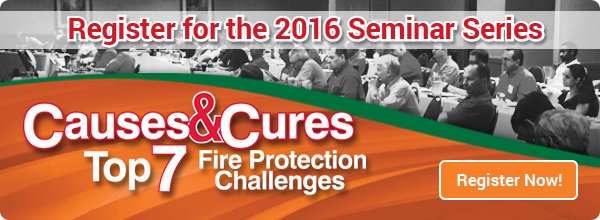During the 2015 Seminar Series titled Trending Now! #FireProtection: Technologies Impacting the Future, Lee Kaiser spoke about trending technology in clean agent fire suppression. In the video excerpt below, you can watch as he explains how clean agent fire suppression systems work. If you would like to register for the 2016 Seminar click here.
Want Access to the Full Video?
There is much more information available in the full video than we will be releasing in our blog series. Don't miss out! If you'd like to watch the entire Trending Technology Clean Agent Systems portion of the seminar, click here to receive the full video.
Transcript
Lee: So, how do you put together a clean agent system? Well, this is where we really start to get into the standard pressure versus high pressure, and we start to look to the cylinder. The cylinder is where the agent sits and it's compressed by nitrogen. And it sits there until the valve opens up. So, every clean agent cylinder has a valve that gets a signal to the electric control head from the releasing panel and then it discharges through piping within the room and up to the nozzles in the ceiling. And so, we're gonna look at that cylinder there.
The standard pressure systems...those cylinders are pressurized to 360 PSI--very common. All the manufacturers out there have the 360-PSI systems. So, you fill the agent cylinder up to the required amount of agent for the room based on the volume of the room and then you top it off with nitrogen to pressurize it up to 360 PSI.
Now, the construction of those cylinders is important to note. At this pressure range, all those cylinders use mild steel--just standard steel--with welded shells. So, it's a very economical way to build a cylinder. So, in this cylinder here, it's got three pieces of steel. It's got a cap on each end and there's a weld to connect that to the cylinder. And the cylinder is rolled from a single sheet of steel and there's one weld on the back of that. So, pretty cheap way to build a cylinder.
And when we use standard pressure systems, what we try to do to get the lowest-cost installation method is we try to locate the cylinders within the protected space. So, imagine in this room we're going to provide a clean agent system. We'd try to put the cylinders right here within the space for however many cylinders we need to protect this volume. And then the other thing we'd try to do is to break them up so that we have them as close to the nozzles as possible. We could group them all together, but then we have longer pipe runs to the nozzle.
We try to distribute them out so that we can control the cost of the piping within the system. Because...understand that the cost for the hardware is all driven by the volume of the room, which you can't typically change. But if you can limit or control the cost of the installation based on the amount of pipe you have to run, then that's one way that you can try to provide a lower-cost installation method.
This is part 5 of the Trending Technology Clean Agent Systems series. Watch the other parts at the links below:
- Part 1: What Are Clean Agent Fire Suppression Systems?
- Part 2: Are Fire Suppression Clean Agents Safe for People?
- Part 3: Common Applications of Clean Agent Systems
- Part 4: Types of Clean Agent Gases
- Part 6: New Technology in High Pressure Fire Suppression Systems
- Part 7: Trending Options for Localized Fire Suppression
- Part 8: Localized Fire Suppression Case Study CNC Machine
- Part 9: In Cabinet Fire Suppression Technology
- Part 10: Advantages & Disadvantages of Rack Mounted Fire Suppression in Data Centers
You can also watch our previous series on Dialer and Communicator Technology Changes at the links below:
- Part 1: Off-Premise Signaling
- Part 2: History of the Network
- Part 3: NFPA Requirements
- Part 4: Radio DACTs Cellular & IP
- Part 5: What Type of Dialer?






